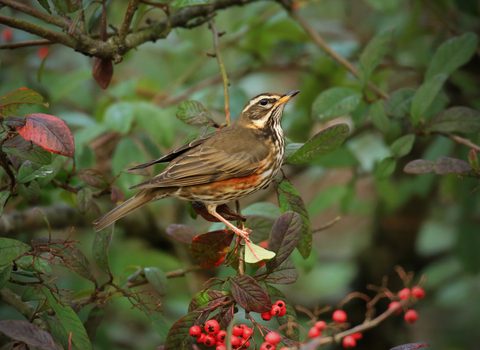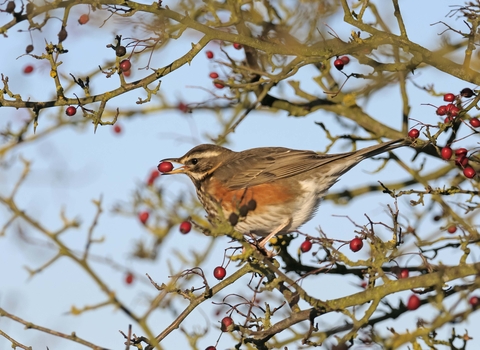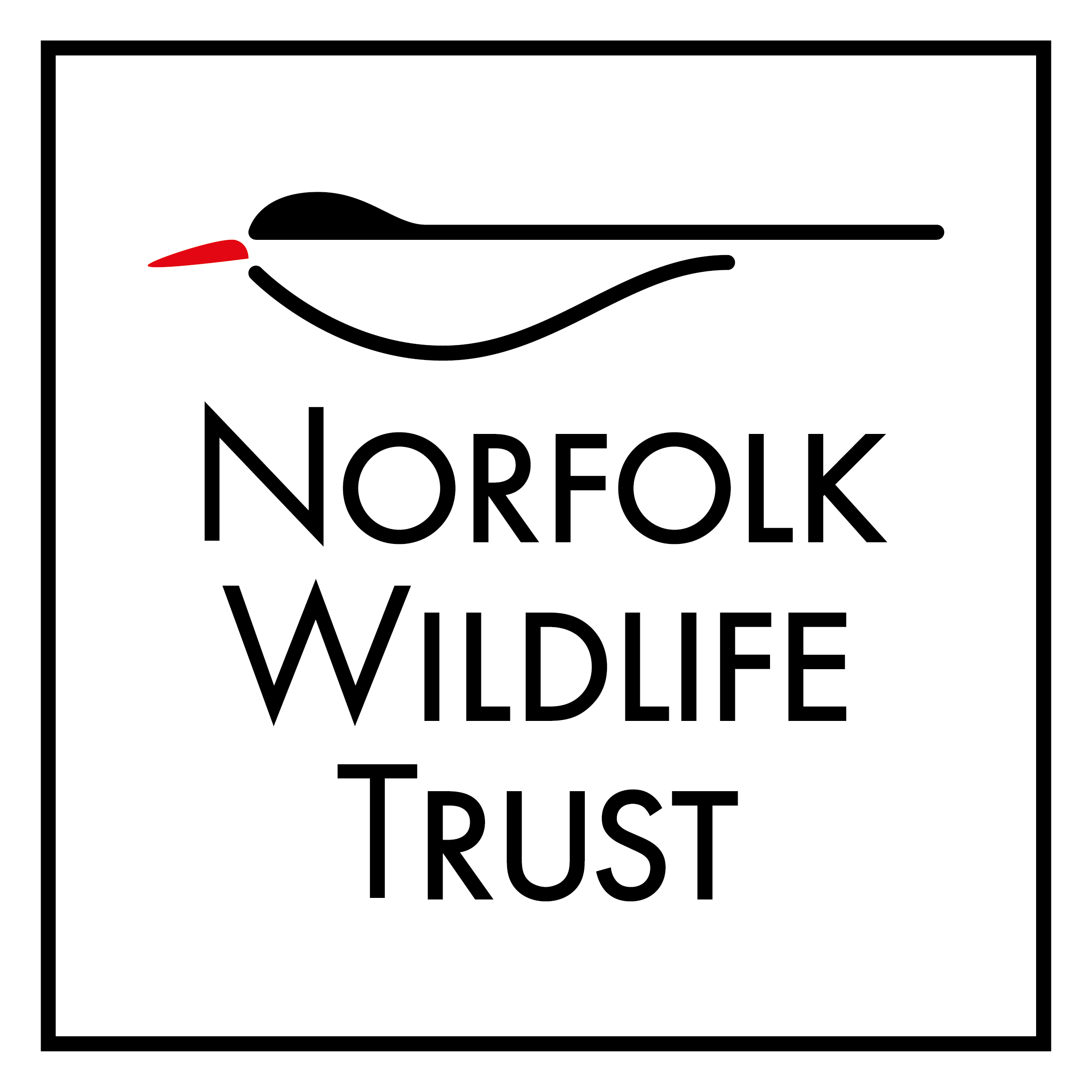
©Jon Hawkins Surrey Hills Photography

Redwing feeding on hawthorn berries ©Chris Gomersall/2020VISION
Redwing
The redwing is a winter visitor, enjoying the feast of seasonal berries the UK's hedgerows, gardens and parks have to offer. Look out for the distinctive orangey-red patches under its wings.
Scientific name
Turdus iliacusWhen to see
September to AprilSpecies information
Statistics
Length: 21cmWingspan: 34cm
Weight: 63g
Average lifespan: 2 years
Classified in the UK as Amber under the Birds of Conservation Concern 5: the Red List for Birds (2021). Protected in the UK under the Wildlife and Countryside Act, 1981. Listed as Near Threatened on the global IUCN Red List of Threatened Species.
About
The redwing is a small thrush that visits the UK in the winter to feast on berry-laden bushes in hedgerows, orchards, parks and gardens. Redwings migrate here at night - on clear evenings listen out for their 'tsee' call overhead. They can often be spotted in flocks with fieldfares, moving from bush to bush looking for food. Apples and berry-producing bushes like hawthorn may attract redwings into the garden.How to identify
The redwing is dark brown above and white below, with a black-streaked breast and distinctive orangey-red flanks and underwing, which the similar song thrush lacks. It has a very smart face pattern, with a white eyebrow stripe and dark brown cheeks.Distribution
A widespread winter visitor.Did you know?
A tiny population of redwings breed in the UK, but most of our birds come from Iceland and Scandinavia in the winter.Watch
Redwings (https://vimeo.com/452208038/5bf4e6ad94)
Redwings by Tom Hibbert
